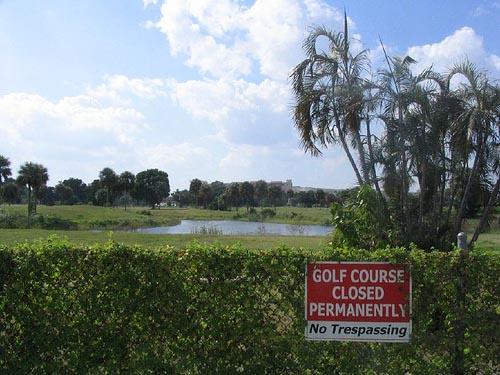 Webster defines equilibrium as "a state in which opposing forces or actions are balanced so that one is not stronger or greater than the other."
Webster defines equilibrium as "a state in which opposing forces or actions are balanced so that one is not stronger or greater than the other."Defining equilibrium as it relates to golf has proven to be a lot easier said than done. For most of the past decade, golf has been defined by too much supply and not enough demand. A business that once was guilty of promoting the "build a course a day" mentality, has been marked for nine years by a glut of course closures as players continue to flee the game at an alarming rate.
According to the National Golf Foundation, 42 golf courses opened in 2014, while 185 closed, for a net loss of 143 courses (in 18-hole equivalents). It's the ninth consecutive year in which more courses closed than opened. In that time, 501 new courses have been built, while 1,269 have closed, for a nine-year net loss of 768 (EHE).
Those closures, however dramatic they might appear, are not nearly enough, says Jim Koppenhaver of Pellucid Corp.
According to Koppenhaver, golfers played about 451 million rounds (exact figures for December are not out yet). That's down 2 percent from 2013, and is the fewest rounds played since 440 million in 1995. It's way off the peak of 518 million rounds played in 2000.
"Supply absorption is still painfully slow," Koppenhaver said during the annual state of the golf industry talk he gives each year at the PGA Merchandise Show with Stuart Lindsay of Edgehill Golf Advisors. "I said six years ago we needed to take 300 or 400 courses out of supply each year for the next six years. We're taking about 140 out a year, so we still have a long way to go before we get back to equilibrium.
"At a net loss of 140 (facilities) a year, we're five years from equilibrium of 13,700 (golf courses)."
So, just how is this magical figure of equilibrium reached? Koppenhaver says the market is at its healthiest when there are 35,000 rounds available for the average golf facility. With the current supply-and-demand data available, that number comes in at around 31,000 rounds per EHE.
"There are two ways to change that; either you get rounds up, or you decrease the supply," he said. "Either we have to take 7 percent of the supply out of the market, or we have to find a way to get rounds demand up to about 500 million again."
According to industry statistics, there were 22.9 million golfers in 2013 (still the most recent data available). That is down nearly 1.2 million players from 2012 and almost 7 million since 2005.
Assuming that there is no rush of new players around the corner, and there is no reason to believe there are, the obvious answer is that more golf courses must go, and quickly.
"That's the common theme we've been saying for eight or nine years," Koppenhaver said. "Don't shoot the messenger."

